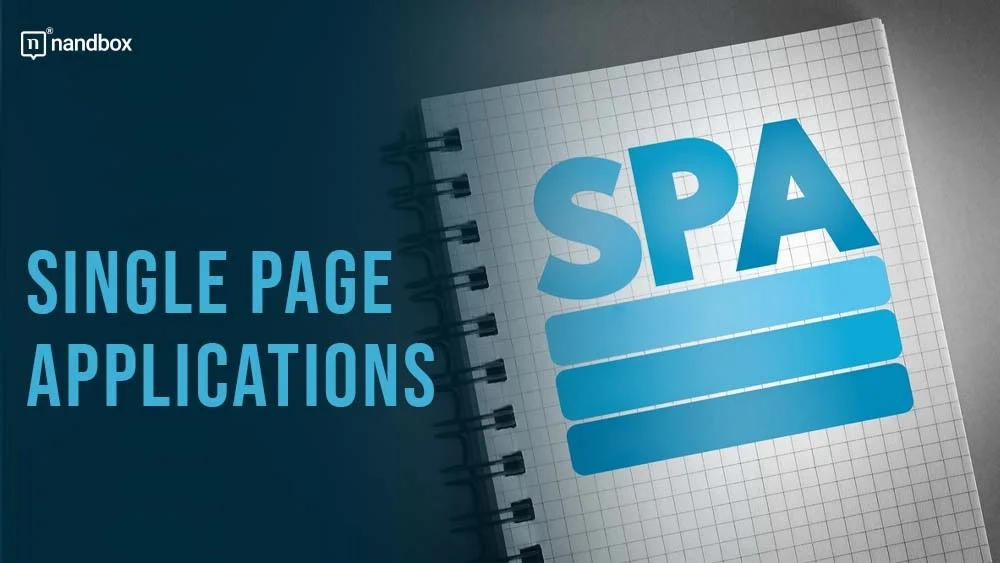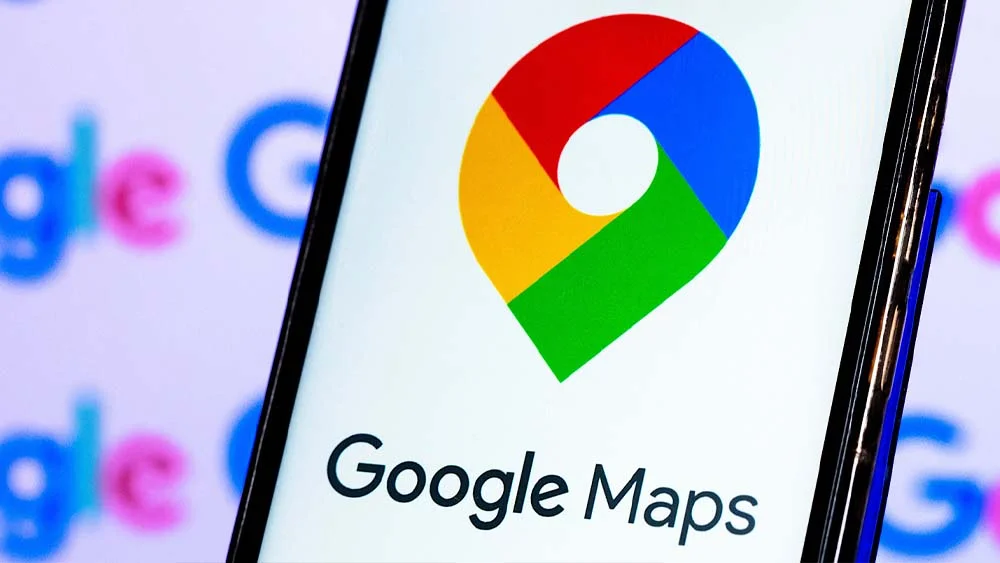The Ultimate Guide to Single Page Applications (SPAs): What You Need to Know
Applications come in many types and forms. On a daily basis, you probably encounter and interact with tens of apps from different categories, such as social media, transportation, fitness, etc. And also different types like native, web, and hybrid apps. We can’t, by any means, deny the fact that they really made our lives easier and more seamless. There are a lot of things that we don’t know about apps. In the end, as users, we only care about the end products and how they work. One fact that you probably didn’t know is that most apps that you encounter are single-page applications. But what exactly are they? That is what you are going to explore in this article. Read on to learn everything about single-page applications.
What Are Single-Page Applications (SPAs)?
Single-page applications are exactly what the game implies. They are web apps that only contain one page, where no elements change but the content itself gets updated. Single-page applications, or SPAs, are usually mirrors of already established websites. However, as apps are more in demand due to their accessibility, these websites or platforms turned to apps to serve a larger audience. A single-page application doesn’t need reloading or an internet connection, as it fetches and loads only a static page. But what if the content itself gets updated? How does it reflect on the app? This is the function of JavaScript, HTML, and CSS retrieved by these applications through a single request.
Key characteristics of SPAs
Unlike traditional multi-page applications, SPAs provide a seamless and fluid user experience by eliminating the need for full-page reloads. The key characteristics that define SPAs include:
- Asynchronous data loading: By employing Asynchronous JavaScript and HTML techniques, SPAs can retrieve data from servers without having to reload the entire page. Applications can now run more quickly and responsively as a result.
- Client-side rendering: Users interact with SPAs through a UI that is rendered directly using JavaScript libraries. This allows for updates to be made immediately and lessens the load placed on the server.
- Smooth navigation: Because SPAs dynamically update the content on the same page, they provide a seamless and ongoing experience for users. Users can jump from one section to another without having to reload the entire page.
Pros and Cons of Single Page Applications (SPAs)
As much as single-page applications can be very beneficial and efficient, there are always bright and dark sides to everything. Thus, let us explore the pros and cons of single-page applications.
Pros
Starting with the bright side first, SPAs have multiple advantages, including:
- Compatibility Across Multiple Platforms: Compatibility is one of the major pros for SPAs. By only using one set of tools and codebase, developers can create applications that run on multiple operating systems and devices. This eliminates the need for separate development processes that can be expensive and tiring.
- Improved User Experience: Since single-page applications don’t require any loading and display data almost instantly, this helps offer a better user experience where users get a seamless and uninterrupted experience.
Cons
Now let’s get to the dark side. Well, metaphorically.
- Lack of Native Features: Although single-page applications are easy to use and convenient, they also lack the depth and functionality of native applications. As single-page applications are programmed and function only to display a single page or document, they don’t have native capabilities and thus have very limited functionality.
- Security Concerns: The simplicity of a single-page application’s structure makes it more vulnerable and prone to attacks and security breaches. If developers don’t take all the security measures needed and take into consideration all the possible scenarios, they can expose their users and users’ information to many malicious attacks
- Memory Usage: When processing large amounts of data or implementing intricate user interfaces, SPAs can place a heavy burden on available memory. This may slow down the app and make it less responsive on older operating systems and devices.
3 Popular Examples of Single-page Applications
Single-page applications (SPAs) have gained immense popularity in recent years, and many well-known applications have adopted this approach. Here are three popular examples of SPAs:
Google Maps
An outstanding SPA that provides a smooth and engaging experience is Google Maps. The map can be panned, zoomed, and searched without requiring the user to reload the page. In real-time, the application’s content is updated dynamically, giving you the experience of using a native and fully functional application.
Ever wondered how the Facebook newsfeed always works quickly, even without an internet connection? SURPRISE! The Facebook news feed is another great example of an SPA that provides a seamless and consistent experience. New content is dynamically loaded as the user scrolls through their feeds without having to reload or even connect to the internet. This facilitates a smoother navigational experience and quicker and more efficient content consumption.
Netflix

I bet you didn’t see this coming. The well-known streaming service Netflix uses SPAs to create an interactive and dynamic interface for its users. Without being caught off guard, users can browse the available genres, watch trailers, and add films to their watchlist. The app uses SPAs to provide a streamlined process for watching movies and TV shows.
When Should You Consider Single-Page Applications
There are many cases and scenarios where you could consider building a single-page application. For instance, you need a development solution that is cost-efficient. As SPAs don’t usually contain the depth and features found in other apps, like native ones, this makes the mission of developing them easy and straightforward, as developers wouldn’t need to exert as much effort as they would for traditional development.
Single-page applications are also ideal if you aim to create an app for content publishing, something like a blog or a reading app. SPAs can enable smooth content browsing and navigation without page reloads or interruptions. This will ensure smooth performance and an excellent reading experience for users.
Additionally, the main case where you should definitely consider a single-page application is if you already have an established website for your business. Instead of going through a trying process of app planning, designing, and development, you can easily create an SPA. Think about it: you already have a website with rich content and all the information that your users would need. All you have to do now is display it in a neat and accessible way.
Creating a single-page application is a big deal. Thus, it is very important to take into consideration all the needs and requirements of your target audience and the functionalities of your application. Before making any decision about what app you are going to develop, start researching your methods and see if this app type would be suitable or not.
Popular frameworks for building SPAs
Several JavaScript frameworks have gained popularity for building single-page Applications (SPAs). Let’s take a look at three popular frameworks:
React
React is a popular and commonly used JavaScript library for creating user interfaces. The framework was launched by Facebook in 2015 and is one of the popular frameworks used by developers. The app structure can be efficiently updated in response to changes in the application state, and developers can make reusable UI components. In order to construct highly functional SPAs, React’s capabilities and efficient system are ideal.
Angular
Another great framework that was also created by a major industry leader is Angular. Google’s Angular is a robust JavaScript framework that provides a full suite of features for developing SPAs. Data binding and component-based structures are all made easier with the help of these tools. Angular is widely used for advanced SPAs due to its rich features and easy interface.
Vue.js
Vue.js is an innovative framework with a strong emphasis on minimalism and readability. It provides a versatile and easy-to-use API for creating SPAs in small, manageable components. Vue.js’s extensive library of plugins and features makes it a flexible option for developing SPAs of any size.
Conclusion
To sum this up, single-page applications are ideal if you want to save both time and effort. However, they don’t guarantee features or much functionality, even though they are easier to develop. No-code and low-code platforms are now the go-to for people, not just developers, who are looking to develop a single-page application easily and swiftly. With no need to establish any codebases or use frameworks. One no-code platform that can guarantee you a great SPA and a robust native application is nandbox. The nandbox app builder is a comprehensive app-building platform with a rich library of features and plugins. Additionally, it is one of the few, maybe even the only, native app builders on the market. By using the nandbox app builder, you can create your single-page application in one swift move, saving yourself an abundance of money, time, and effort.





